Help! My Dog Attacked My Other Dog and Drew Blood [Next Steps]
Dog aggression can be a scary experience for both owners and their pets. It’s essential to understand the factors that may trigger such behavior, so let’s dive in and explore the world of dog aggression.
When it comes to dogs, aggressive behaviors can manifest in various ways, such as snarling, growling, snapping, or even full-on dog attacks. It’s important to note that not all aggressive dogs are “bad” dogs; sometimes, they’re just responding to a situation or expressing an emotion.
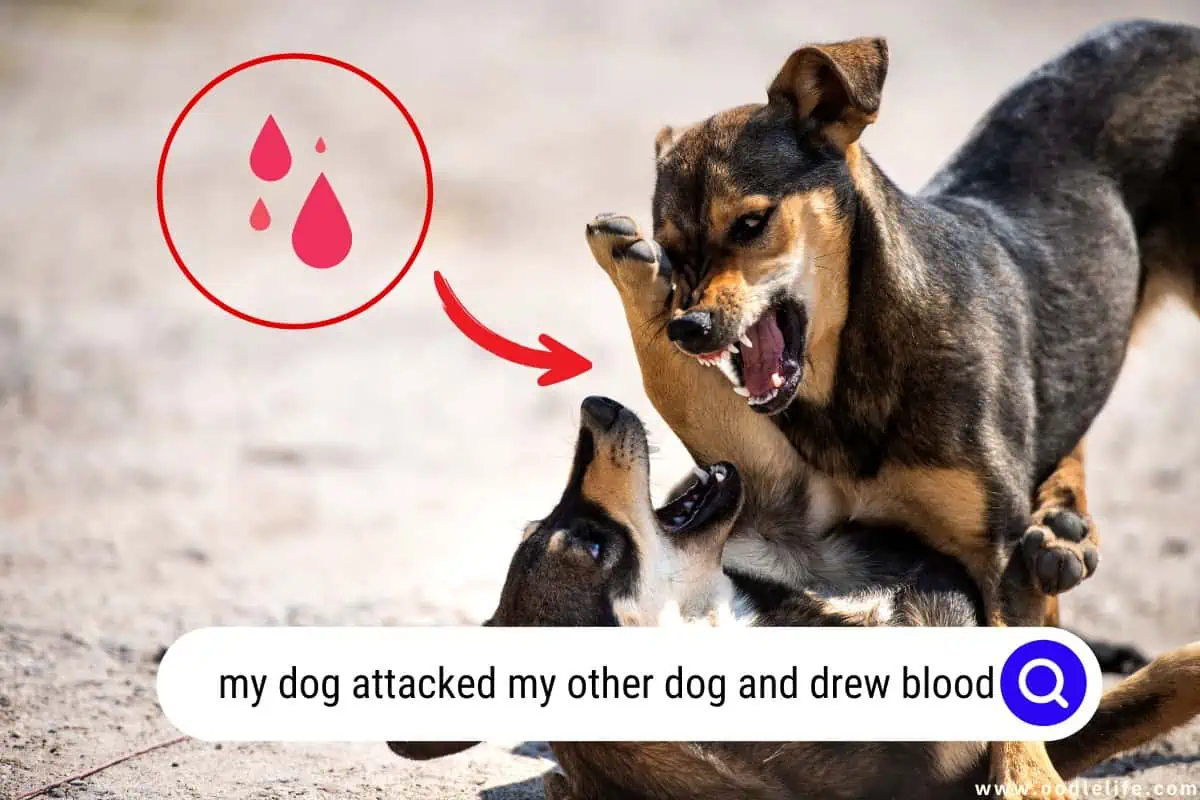
There are warning signs that may indicate that a dog is about to become aggressive. Some of these signs include raised hackles, stiff body language, direct and intense eye contact, and low growling. Being aware of these warning signs can help you intervene early and prevent an escalation.
In the world of dogs, aggressive behavior can result from numerous factors such as fear, pain, territorial disputes, or even a lack of proper socialization. For example, a dog who has not been exposed to other dogs during its critical socialization period might exhibit aggressive behavior as it is unsure how to interact with other dogs.
| Concern or Consideration | Next Steps |
|---|---|
| Injury to Other Dog | Immediate medical attention may be needed for the injured dog. |
| Your Dog’s Behavior | Understanding why the attack occurred; professional behavioral assessment may be necessary. |
| Legal Responsibilities | You may be legally responsible for the injured dog’s veterinary bills and other damages. |
| Potential for Disease | Transmission of diseases (such as rabies) should be considered; vaccination records may be required. |
| Relationship with Other Owner | Open communication and empathy with the other dog’s owner are essential. |
| Your Dog’s Health | Check your dog for injuries as well, especially if there was a fight. |
| Future Prevention | Training, socialization, or possibly muzzling to prevent future incidents |
Types of Aggression
Food Aggression
Food aggression is quite common in dogs and occurs when they guard their food against other animals or humans. They may growl, snap, or even bite if someone tries to take their food. To avoid issues related to food aggression, it’s essential to train your dog from an early age to tolerate the presence of others while eating.
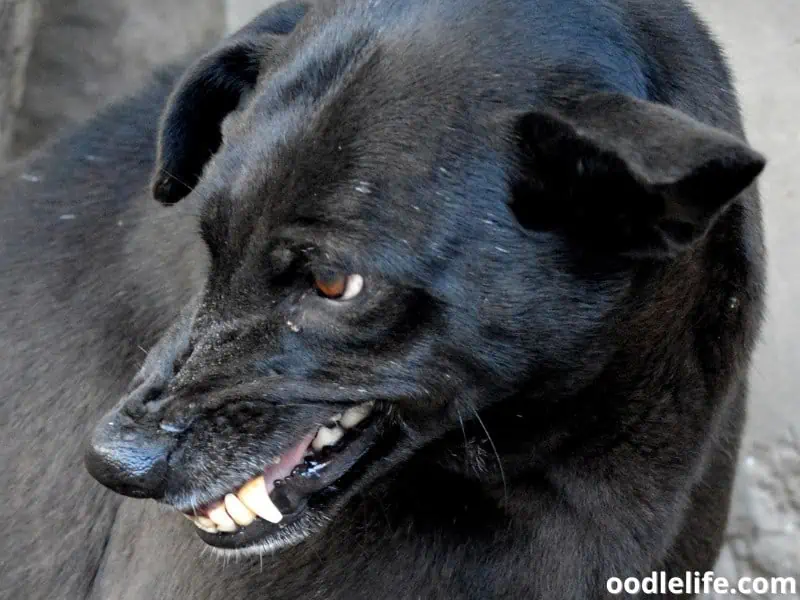
One way to do this is by gradually approaching them with a treat while they are eating. This helps them associate your presence with a positive experience.
Possessive Aggression
Possessive aggression, also known as resource guarding, is when a dog becomes protective of items they deem valuable. Toys, bones, and even their favorite spot on the couch can trigger this type of aggression. It’s best to address this behavior at an early age, and you can combat it with various training techniques, such as the “drop it” command.
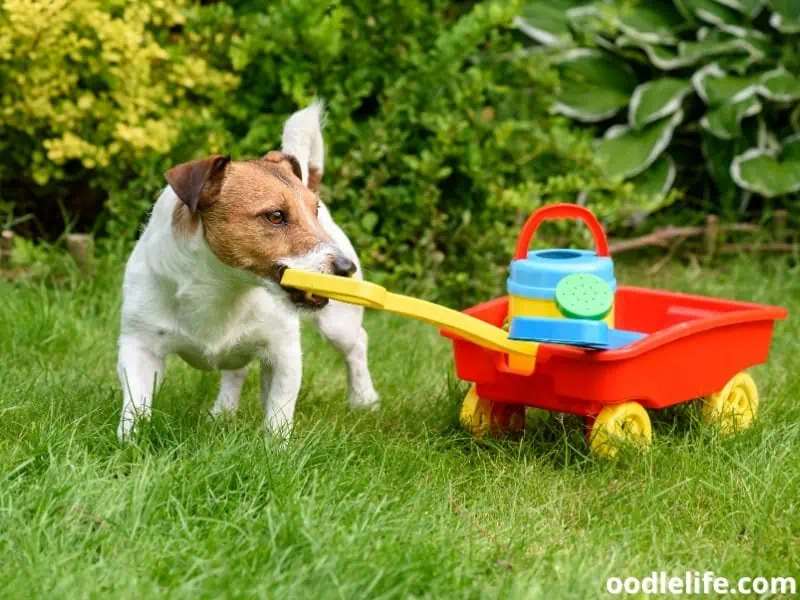
Teaching dogs that giving up their possessions won’t lead to negative consequences can help mitigate possessive aggression.
Jealousy
Jealousy in dogs can manifest as aggression towards other dogs, pets, or humans. It’s usually driven by competition for attention or resources, and like the other types of aggression, it’s crucial to address this behavior early on. Providing equal attention to all dogs in the household and rewarding calm behavior can help alleviate jealousy.
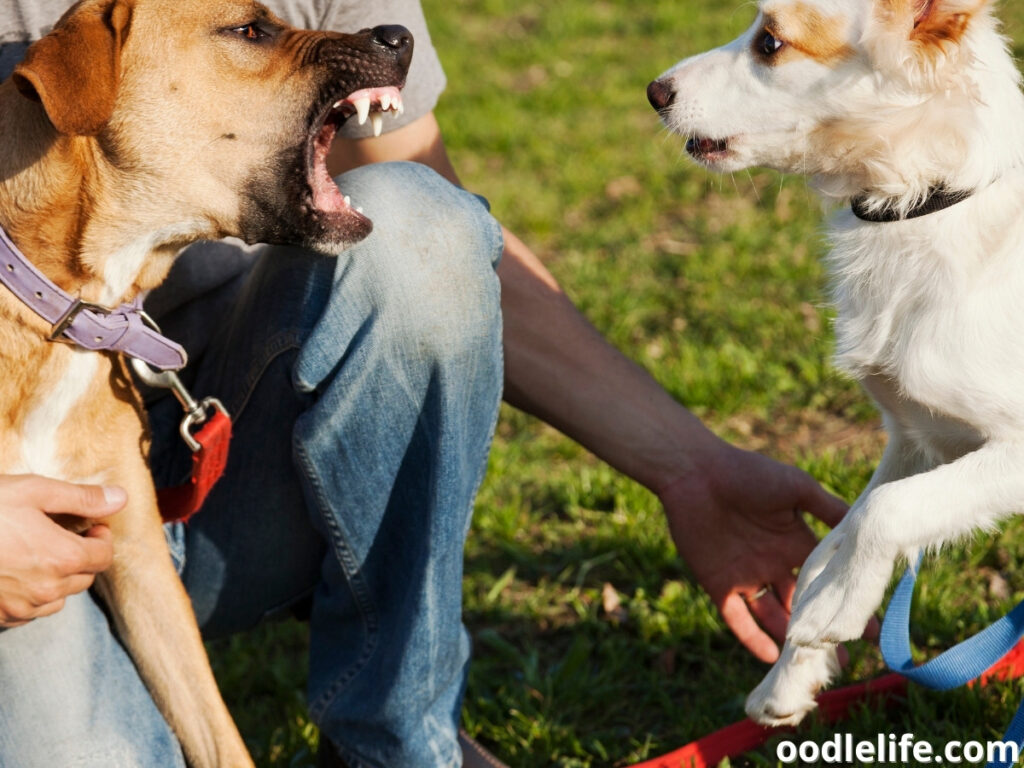
In some cases, obedience classes or seeking help from a professional dog trainer may be necessary to address jealous behavior effectively.
Just remember, educating yourself and working closely with your dogs to understand their triggers and motivations is the key to addressing these types of aggression. Consistent training, patience, and a healthy dose of humor will go a long way in helping your dogs live harmoniously together.
Dealing with Dog Fights
Dog fights can be a stressful situation for both you and your pets. They can range from rough play to full-blown brawls, sometimes even drawing blood. Keep calm; we’ve got some tips and tricks to help you handle these situations with confidence and knowledge.
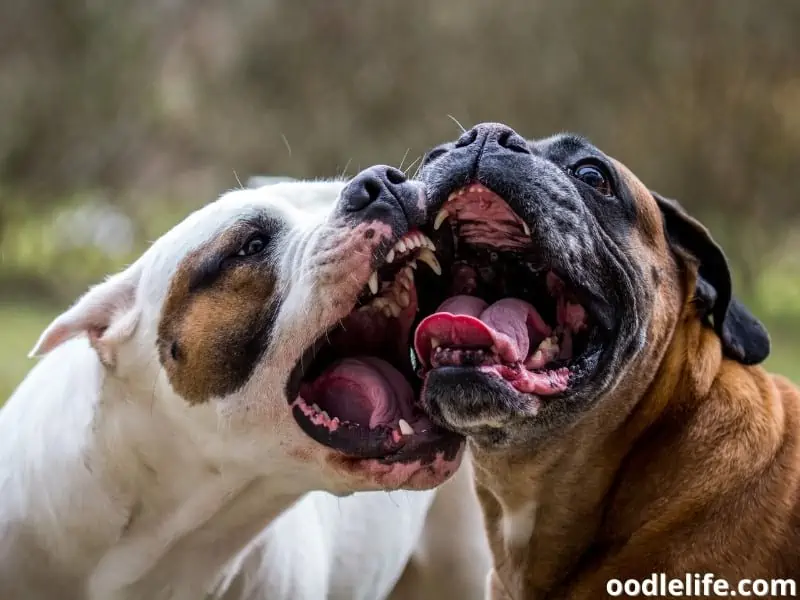
First and foremost, it’s essential to know the difference between play and an actual fight. Rough play might look like a fight, but it’s usually harmless and involves dogs taking turns being on top or chasing each other. In a real dog fight, you’ll see ferocious behavior like snarling, biting, and bloodshed.
It’s crucial not to confuse the two, as intervening in a playful situation could escalate matters.
When a genuine dog fight occurs, it’s vital to act quickly but also with a clear head. Avoid putting your hands directly in the middle of two fighting dogs as that could lead to severe injuries. Instead, try to distract or create a barrier between them using a loud noise or an object like a broomstick.
The goal is to startle or break their focus enough to separate them.
Once the fight is broken up, it’s essential to give each dog their space to cool down. Dogs can become highly agitated and might redirect their aggression if they are pushed into a confined area with other pets or people. Make sure to keep them separate and monitor their behavior for any signs of further aggression.
After things have settled down, it’s time to assess any injuries and clean them up, especially if blood was drawn. It’s good to remember that even the most well-behaved dogs can have bad days or let their instincts take over in certain situations, so it’s essential to keep an eye on interactions between your furry friends.
In the future, make a note of any triggers that may have contributed to the dog fight and work on avoiding those situations or implementing training to help prevent further incidents. Keeping a watchful eye, intervening early in escalating situations, and knowing when to call in a professional trainer can set you up for success in maintaining a peaceful household — because nobody wants to come home to a “Survival of the Fittest” dog edition.
In conclusion, dealing with dog fights can be challenging, but staying calm and using some of these techniques can help you navigate the situation confidently. And remember, if your dogs are just engaging in some rough play, let them burn off that energy and be friends without unnecessary intervention.
Assessing Bite Wounds
When your dog attacks another dog and draws blood, it’s crucial to assess the bite wounds carefully. This will help you and any veterinary professionals you consult determine the appropriate course of action for the injured dog. Here are some key factors to keep in mind when evaluating these wounds.
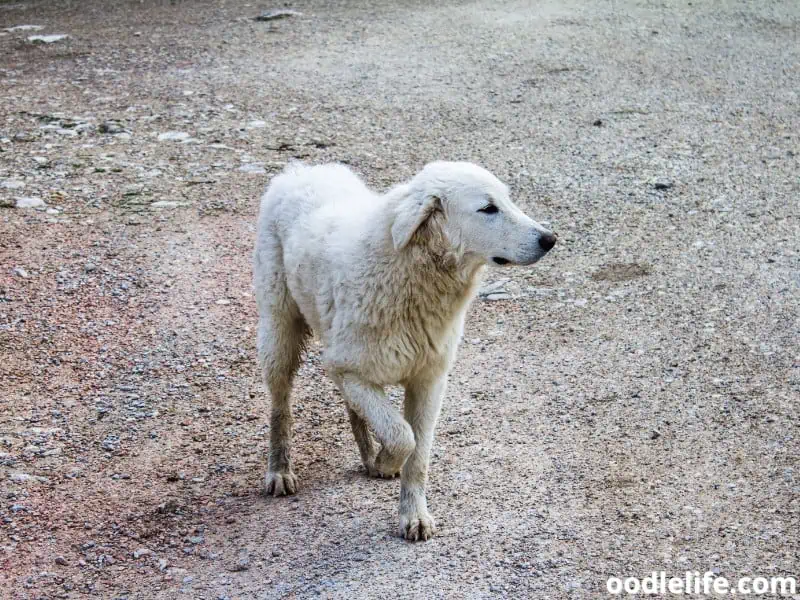
Puncture Wounds
Puncture wounds are a common outcome after a dog bite. These are small, deep holes caused by the dog’s teeth penetrating the skin. Although puncture wounds might seem less severe than large, open lacerations, they can be deceptive.
Due to their depth, puncture wounds can be breeding grounds for infection, especially if bacteria are introduced at the time of the bite or if the affected area becomes contaminated afterwards.
When assessing puncture wounds, first, take note of their location, as this can affect the risk of more significant issues. For example, puncture wounds close to joints or near the eyes can be more problematic than those in less delicate areas, such as on the back or limbs. Additionally, count the number of puncture wounds present.
Single wounds may be easier to treat and present a lower infection risk than multiple punctures.
Next, look for signs of infection. Although it may not always be immediately apparent, some indicators include redness, swelling, or discharge at the wound site. The injured dog may also exhibit pain or seem more lethargic than usual.
If you suspect infection, contact your veterinarian promptly, as the sooner it’s addressed, the better the chances for successful recovery.
Remember, when dealing with bite wounds, it’s essential to remain calm and take a systematic approach. Assess the situation thoroughly, address any immediate concerns, and consult with a veterinarian as needed. By keeping a clear head and staying knowledgeable about puncture wounds and infection risks, you can provide the best care for your injured pet.
Veterinary Treatment
When your dog attacks another dog and draws blood, it’s essential to seek immediate veterinary attention. Your veterinarian will assess the situation and determine the appropriate course of action to ensure both dogs’ health and wellbeing.
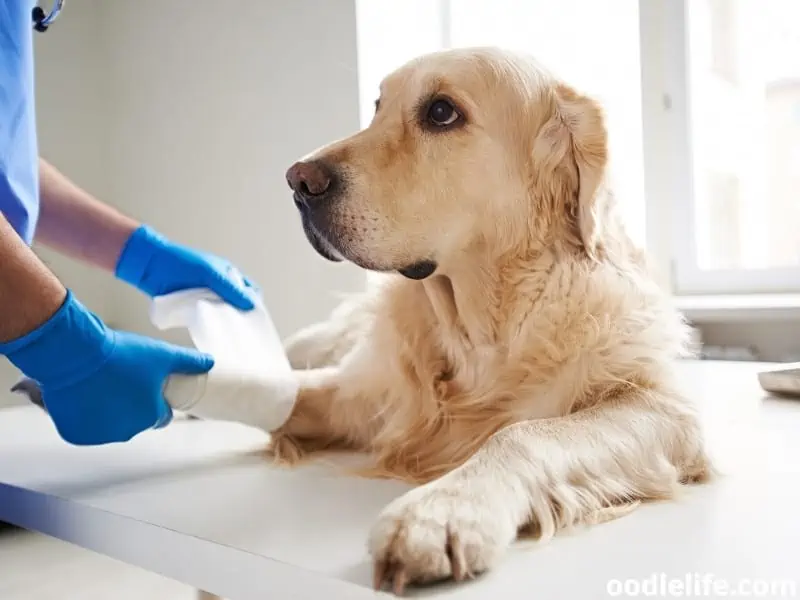
General Anesthetic
In some cases, your veterinarian may recommend general anesthesia for your dog to receive proper treatment. This could be necessary if the wounds are deep or located in a sensitive area. It creates a comfortable and pain-free environment for your pet during the procedure.
For example, imagine Fido, your happy-go-lucky Golden Retriever, getting into a scuffle with his housemate, Fluffy. Before you know it, Fido has a nasty bite on his ear that’s bleeding profusely. Poor Fido!
In this case, a general anesthetic might be administered to allow your veterinarian to clean and suture the wound without causing further distress to Fido.
Once your veterinarian has addressed the wounds, they may prescribe antibiotics to minimize the risk of infection. It’s essential to administer these medications as directed to ensure the best possible outcome for your furry friend.
Keep an eye on both dogs for any signs of complications. Some common complications to watch for include infection, prolonged pain, and discomfort. If you notice anything off, be sure to contact your veterinarian for guidance.
Remember, it’s always better to err on the side of caution. So if your dog finds itself in a hairy situation that ends with a bite wound, don’t hesitate to consult a professional. Your dogs will thank you for your swift action, and with proper veterinary care, they’ll be back to their old playful selves in no time.
Dog Training and Behavioral Issues
If your dog attacked your other dog and drew blood, it’s essential to address the underlying problem before it becomes a pattern and leads to more severe issues. Training and managing behavioral issues are crucial steps in preventing future incidents. Let’s delve into hiring a dog trainer and what they can do for you.
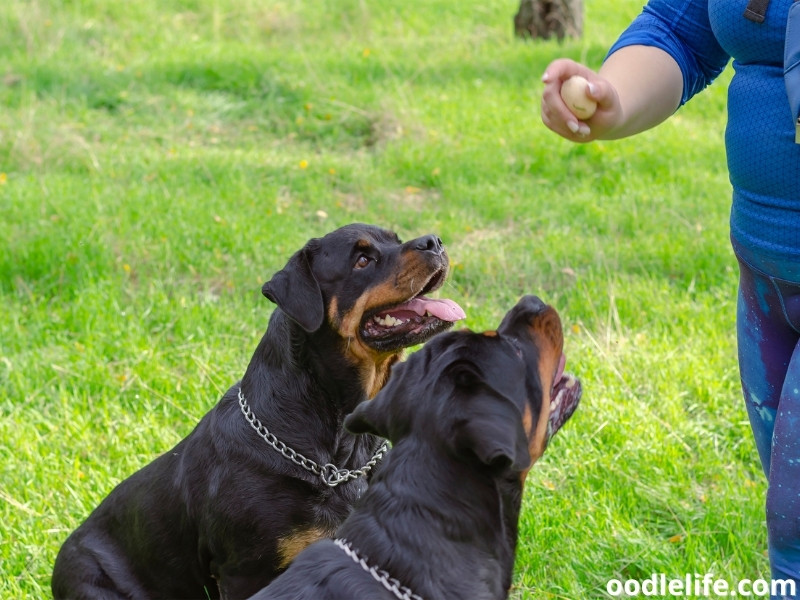
Hiring a Dog Trainer
A professional dog trainer can indeed be an invaluable resource in reducing aggression and improving your dog’s overall behavior. They can:
- Identify the root causes of your dog’s aggression and tailor a training program to address specific issues.
- Help you establish clear boundaries, commands, and routines to promote good behavior and discourage negative actions.
- Teach you strategies to manage conflicts between your dogs and diffuse tense situations safely.
To find the right dog trainer for your situation, here are some tips:
- Ask for recommendations: Talk to your vet, friends, or family members who have dogs. They are often the best sources of reliable information.
- Research their credentials: Look for qualified trainers with experience managing aggressive dog behavior. You may want to seek professionals certified through organizations like the International Association of Canine Professionals or the Association of Professional Dog Trainers.
- Check reviews and testimonials: Look online to find feedback from people who have used the trainer’s services. Hearing about their personal experience can provide valuable insight into the trainer’s methods and effectiveness.
Remember, patience is vital while working with your dog and attempting to correct behavioral issues. Just like humans, dogs have their quirks, and it might take some time to find the right approach that works for your furry friend.
While working with a dog trainer and addressing your dog’s behavioral issues is essential, don’t forget to add a sprinkle of love, consistency, and understanding. Your dog ruffly deserves it! Happy training!
Prevention and Management
Preventing dog aggression starts with understanding its root cause. Most incidents occur due to fear, dominance, or territorial issues. Consistent training, socialization, and supervision can help avoid problems between your furry friends.
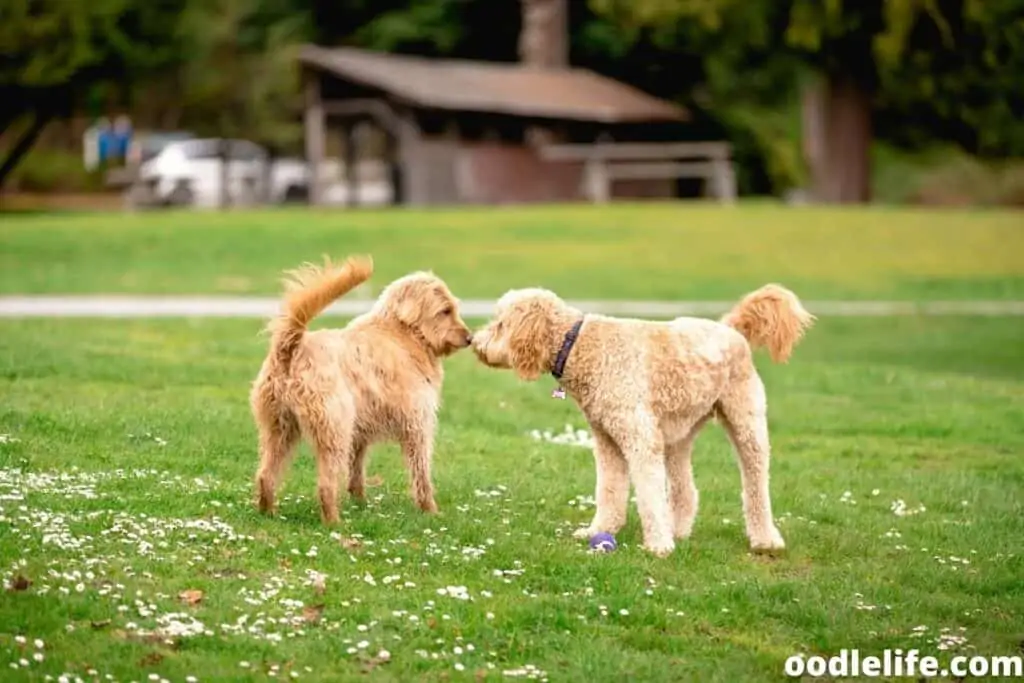
Introducing new dogs, especially female dogs, to the household should be a gradual process. Begin with neutral environments, allowing both dogs to familiarize with each other’s presence. Additionally, establish boundaries for personal space and resources, such as food, toys, and sleeping areas.
Recognizing the warning signs is crucial in preventing dog fights. Observe your dogs for:
- Stiff posture: Dogs displaying a rigid stance or raised hackles might be on edge.
- Growling: Low rumbling growls can signal discomfort or aggression.
- Staring: If a dog intensely stares and doesn’t blink, it may indicate tension.
Now, onto management. If a dogfight occurs, remember the cardinal rule: Do not use your hands to intervene! Quickly grab a broom, water spray, or any other tool to separate them safely.
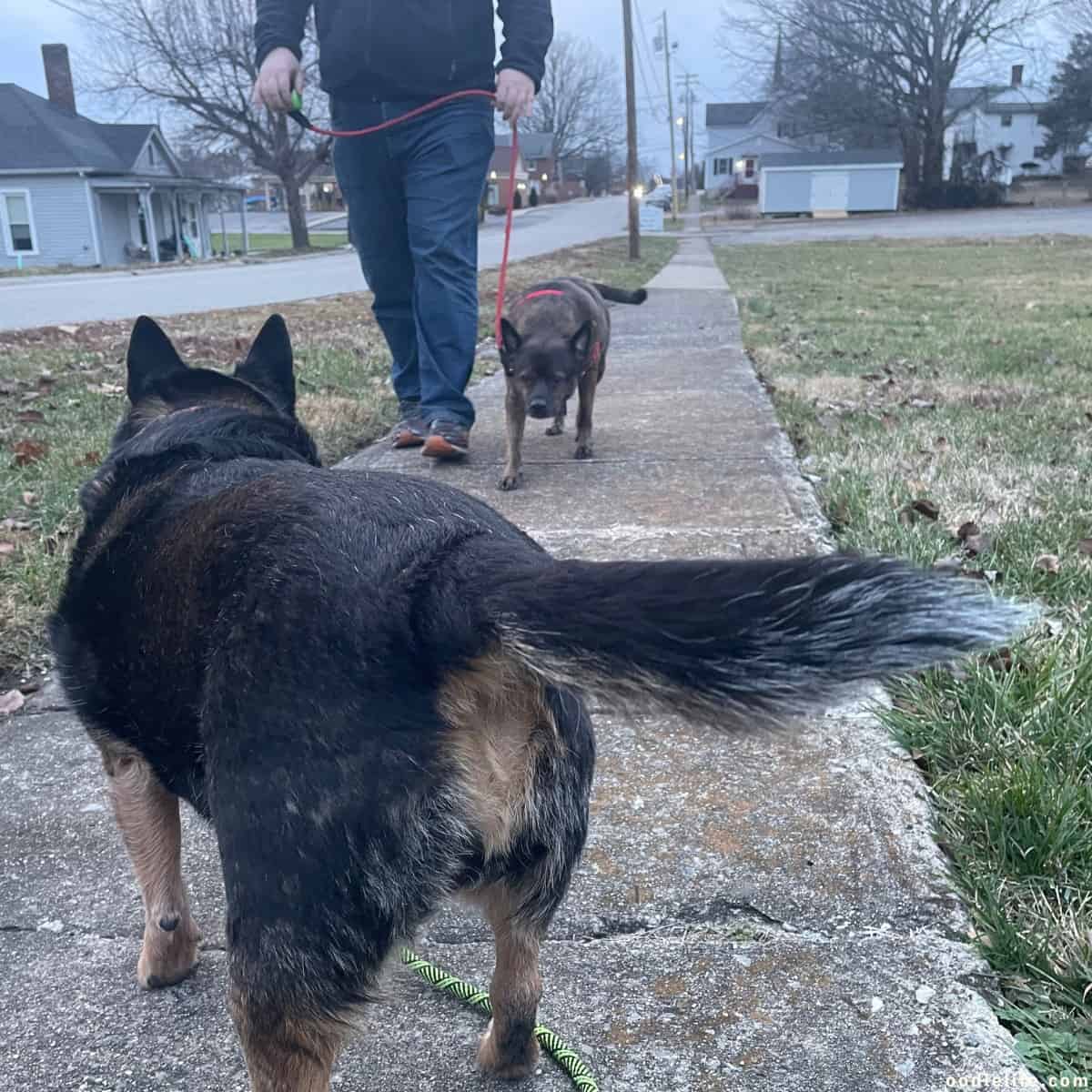
Once separated, calmly place them in separate areas to cool off. Afterward, assess any injuries, and consult a vet if necessary.
In some cases, spaying and neutering can aid in reducing aggression. If aggression persists, seek advice from a professional, such as a veterinarian or dog behaviorist. They can recommend appropriate steps, like obedience training or behavior modification therapy.
In conclusion, breaking up a dogfight is far from a walk in the park. But with adequate preventative measures, recognition of warning signs, and effective management, your canine companions should be singing “Kumbaya” in furry harmony.